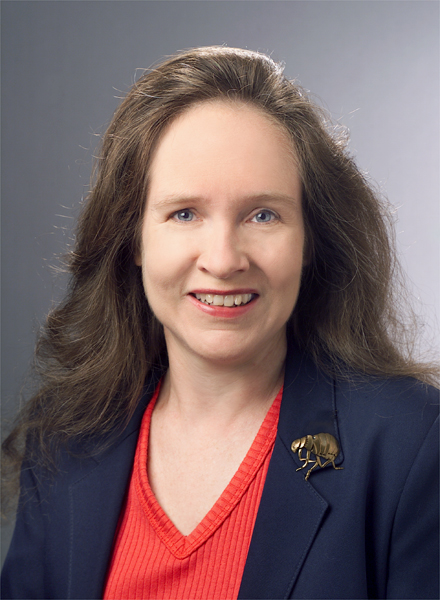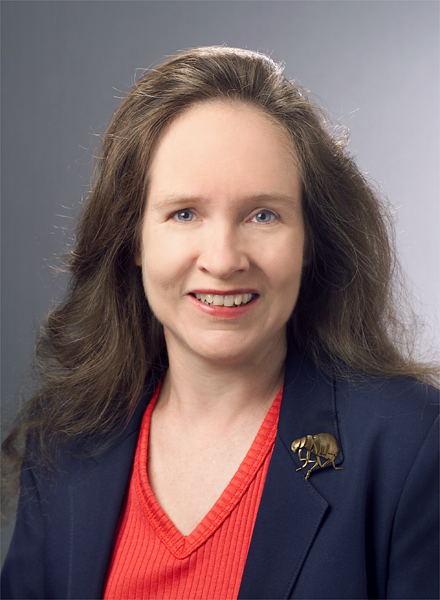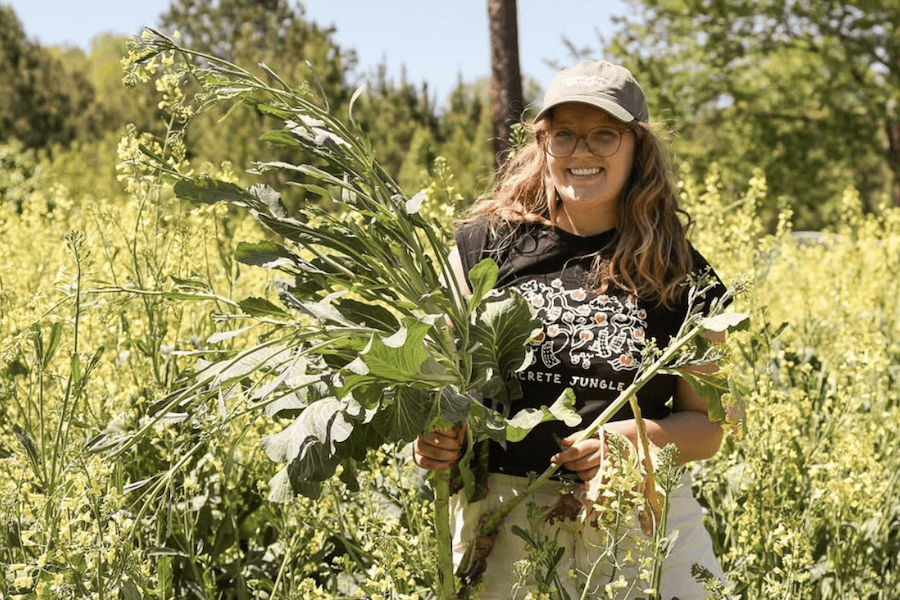The Entomological Society of America’s Southeastern Branch presented University of Georgia entomologist Nancy Hinkle with its 2014 Recognition Award in Urban Entomology.
Hinkle, who has been a medical-veterinary entomologist at UGA since 2001, primarily works with insect pests that affect the poultry industry. But over her career she also has researched various insects that affect humans — from fleas to head lice to mosquitoes. Because of her interest in blood-sucking insects, Hinkle has become one of the nation’s leading experts on delusory parasitosis or imagined infestations.
“Dr. Hinkle’s primary responsibility is working with the poultry industry and with veterinary or medical entomology (research), but in this work she encounters a number of problems that affect our urban clientele,” said Wayne Gardner, a UGA professor of entomology with the College of Agricultural and Environmental Sciences. “Even though it’s not her primary responsibility, Dr. Hinkle works to address each of those problems brought to her, and she addresses them quite effectively.” Gardner nominated Hinkle for the award.
Hinkle is the fourth UGA CAES entomologist to receive this award. Ron Oetting (1990), Dan Suiter (2010) and Brian Forschler (2011) have also received this honor. As Southeastern Branch winner, Hinkle is eligible for the Entomological Society of America’s national Recognition Award in Urban Entomology, one of the most prestigious awards the society bestows.
Hinkle’s work with urban and agriculturally problematic pests is well respected, but her two decades working with delusory parsitosis created a name for the entomologist outside of the academic world.
Her interest in the subject started in the 1980s when her doctoral advisor at the University of Florida, flea researcher Phil Koehler, received a sample he did not have time to identify. He handed it off to Hinkle who spent hours trying to identify the insect. There was nothing there. With funding from the Florida Entomological Society, Hinkle found that it wasn’t uncommon for pest control operators and labs to be asked to solve imaginary pest infestations.
As an Extension entomologist, she often received — and still receives — calls from worried individuals who believe they are infested with an unknown skin parasite. This condition is sometimes found in people with no other sign of mental illness or substance abuse.
She summarized her experience with “invisible bugs” in the 2010 Annual Review of Entomology article, “Ekbom Syndrome: The Challenge of ‘Invisible Bug’ Infestations.” In 2011, Current Psychiatry Reports included her article, “Ekbom Syndrome: a delusional condition of ‘bugs in the skin’,” to help mental health professionals understand the condition.
“She’s kind of a focal point for professionals who work with people affected by this condition,” Gardner said. “She broke it down and talked about the different issues that can cause it.”
In addition to her work with human and animal ectoparasites and delusory ectoparasites, Hinkle maps the geographic range of brown recluse spiders in Georgia and illustrates how rare the feared spiders are in the state.
Hinkle is currently working on control methods for avian mites, pest flies and darkling beetles that carry salmonella and can transmit the bacteria among poultry flocks. In 2012, she received the Lifetime Achievement Award from the Livestock Insect Workers Conference for her work with poultry and cattle parasites and pests.
Since her interests span the worlds of veterinary, agricultural and urban pest problems, Hinkle frequently addresses pest management conferences around the country. She has made more than 300 presentations to pest control groups, including 22 state associations, the National Conference on Urban Entomology, the Purdue Pest Management Conference and the National Pest Management Association.
Hinkle received a bachelor’s degree and a master’s in medical entomology from Auburn University and a Ph.D. from the University of Florida. She taught at the University of California, Riverside, for nine years before joining the UGA Department of Entomology.








